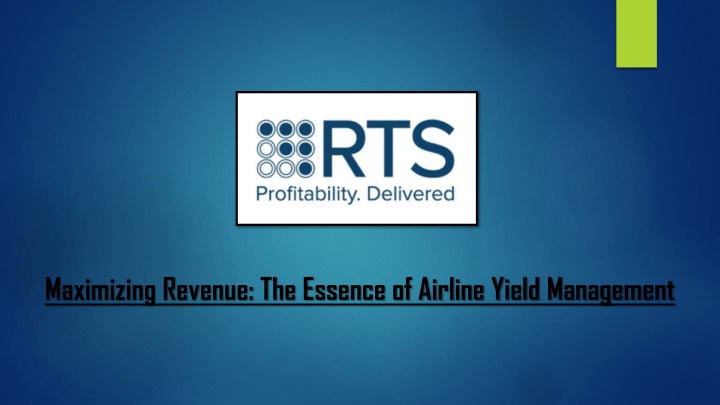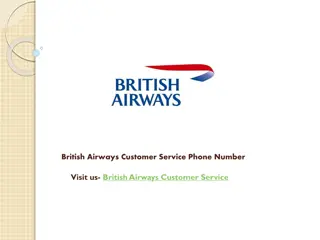The Essence of Airline Yield Management
In the dynamic world of airline operations, optimizing revenue isn't just a goalu2014it's an intricate strategy known as airline yield management. This sophisticated approach, employed by carriers worldwide, hinges on maximizing revenue from every s
Download Presentation

Please find below an Image/Link to download the presentation.
The content on the website is provided AS IS for your information and personal use only. It may not be sold, licensed, or shared on other websites without obtaining consent from the author.If you encounter any issues during the download, it is possible that the publisher has removed the file from their server.
You are allowed to download the files provided on this website for personal or commercial use, subject to the condition that they are used lawfully. All files are the property of their respective owners.
The content on the website is provided AS IS for your information and personal use only. It may not be sold, licensed, or shared on other websites without obtaining consent from the author.
E N D
Presentation Transcript
In the dynamic world of airline operations, optimizing revenue isn't just a goalit's an intricate strategy known as airline yield management. This sophisticated approach, employed by carriers worldwide, hinges on maximizing revenue from every seat on every flight through strategic pricing and inventory management. Understanding Airline Yield Management At its core, airline yield management is about selling the right seat to the right customer at the right price and time to maximize revenue. This involves leveraging data analytics, demand forecasting, and pricing strategies to achieve optimal results. Revenue Technology Services (RTS) excels in this domain by offering airlines advanced solutions that integrate cutting-edge technology with industry expertise.
Key Components of Airline Yield Management 1.Demand Forecasting: Predicting future demand accurately is essential for airlines to make informed decisions on pricing and capacity. RTS employs sophisticated algorithms that analyze historical data, market trends, seasonal variations, and even external factors like economic conditions and events to forecast demand with precision. 2.Dynamic Pricing: Unlike fixed pricing models, dynamic pricing allows airlines to adjust fares in real-time based on demand fluctuations, booking trends, competitor pricing, and other variables. RTS provides tools that enable airlines to set optimal prices dynamically, maximizing revenue while remaining competitive in the market. 3.Inventory Management: Effective inventory management ensures that airlines allocate seats across different fare classes strategically. RTS offers solutions that help airlines balance seat availability and pricing tiers to capture revenue across various customer segments, from budget-conscious travelers to premium flyers. 4.Optimization Algorithms: RTS leverages sophisticated optimization algorithms to compute the optimal mix of fares and seat allocations. This ensures that airlines achieve the highest possible revenue while meeting operational constraints such as aircraft capacity and crew availability.
Benefits of RTS's Airline Yield Management Solutions By partnering with RTS, airlines gain several competitive advantages: Increased Revenue: RTS's solutions are designed to maximize revenue potential by optimizing pricing and inventory allocation. Enhanced Customer Satisfaction: By offering competitive prices and availability, airlines can attract and retain customers, enhancing overall satisfaction and loyalty. Operational Efficiency: Automated processes and real-time analytics provided by RTS streamline operations, reducing costs and improving efficiency. Conclusion In conclusion, airline yield management is not merely a strategy but a critical capability for airlines looking to thrive in a competitive industry. RTS's expertise in this field empowers airlines to achieve significant revenue gains while delivering value to passengers through competitive pricing and enhanced service offerings. By embracing RTS's solutions, airlines can navigate market uncertainties and capitalize on opportunities, ensuring sustainable growth and profitability in the dynamic aviation landscape.
THANK THANK YOU YOU























